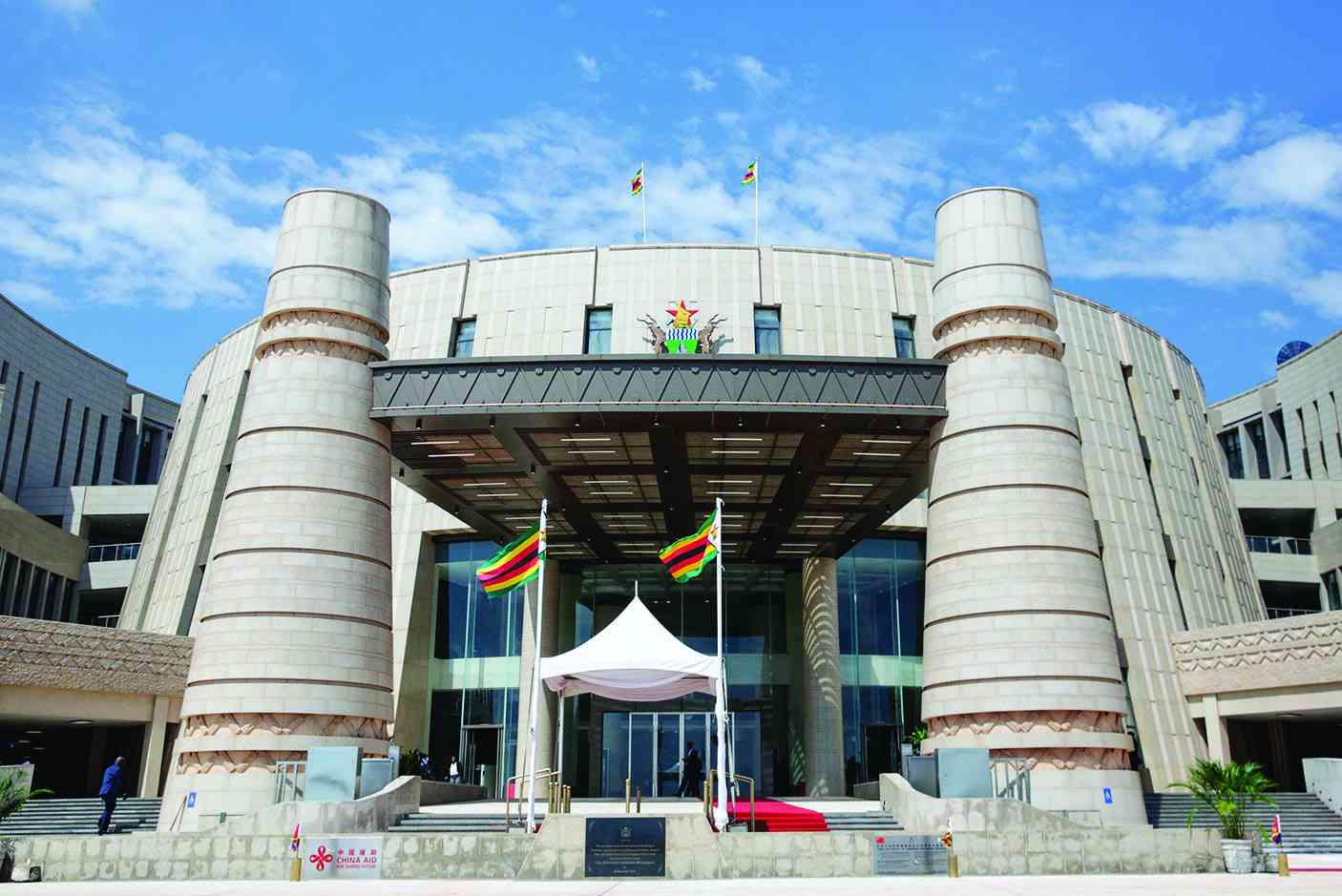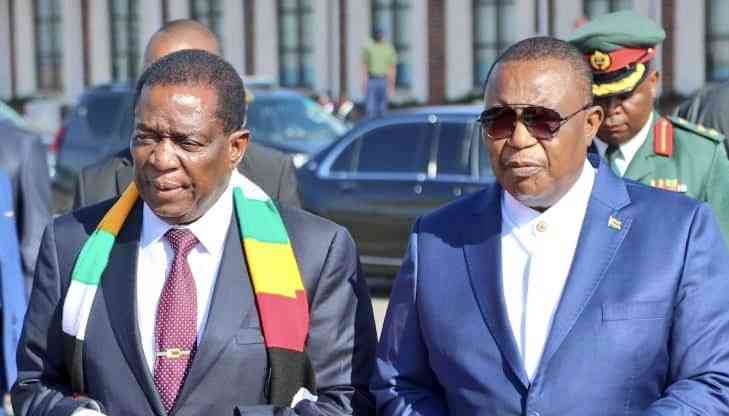
AS the market awaits the announcement of the new cabinet to steer the country’s economic policies in the next five years, it is imperative to point the state of the economy and the key priorities that need to be addressed.
Despite the adverse impact of Covid-19, geopolitical pressures, the impact of Ukraine War on commodities, recurring power cuts and high inflation among a plethora of endogenous factors, Zimbabwe recorded a modest economic growth rate of 3,4% in 2022 (down from 6,1% in 2021).
The government is upbeat that the economy will grow by at least 3,8%, while the International Monetary Fund (IMF) expects Zimbabwe’s economy to grow by 2,8% in 2023, and the World Bank projects a growth of 3,6%.
The key drivers of the ongoing economic resilience being the growth in export revenue, which is headlined by raw minerals and tobacco and the growth in diaspora remittances that now anchor domestic demand in a virtually dollarised economy.
As of June 30, 2023, export receipts contributed US$3,055 billion (55% of the foreign currency), while diaspora remittances ranked a joint second at 16% with US$919 million. It is expected that remittances will eclipse US$2 billion for 2023.
Despite the rosy picture on resilience, the government has dismally failed to manage the local currency, with the economy slipping back into hyperinflation in May and June.
Unemployment remains high, especially among the youths with most giving up on any local job prospects while public service delivery in health care and education has crumbled to all-time lows due to lack of investment and low civil service morale.
The country has also been hounded by recurring power cuts during dry seasons since 2011, while the pace of infrastructure development (mainly in roads and dams) is way below the pace of deterioration being witnessed in the country. This means that these aspects need to be addressed and managed.
- Village Rhapsody: How Zimbabwe can improve governance
- Village Rhapsody: Engage men to end gender-based violence
- Village Rhapsody: How Zimbabwe can improve governance
- Zim maize output to drops by 43%
Keep Reading
Monetary policy
Prices for goods and services in the economy have remained elevated beyond the reach of many, with the market exchange rate averaging US$1:ZW$6 300, while the official rate is at US$1:ZW$4 647.
Policy missteps have resulted in a sharp increase in US dollar inflation with blended inflation recorded at 77,2% in August 2023, while annual inflation for the local currency is estimated to be 240% (last published in January 2023 at 229,8%).
Different exchange rates still prevail for foreign currency account (FCA) payments, Zimbabwean dollar cash payments and US dollar cash in the market. With the level of dollarisation estimated to be above 90%, it is almost impossible to save the Zimbabwe dollar unless there is a policy miracle to inject confidence in the failed local currency.
The elevated inflation points to the deafening impact of the lack of confidence in the local currency with retail prices for consumer goods and services closely aligned to the market exchange rate.
There is no doubt that the major driver to inflation in Zimbabwe and source of economic stability is money printing by the central bank. Broad money (M3) amounted to ZW$14,275.48 billion as at the end of June 2023, compared to ZW$2,338.23 billion recorded in December 2022.
In 2022, broad money grew by 391,88% on an annual basis, an increase from 131,86% realised in December 2021. However, much of the growth can be attributed to the impact of local currency depreciation, which means the foreign currency component in local bank accounts (80% of local deposits) yields more at revaluation.
Consistently high inflation points to the underlying instability and weakness in fundamentals that characterise the local economy. Hence, inflation remains the biggest impediment to favourable consumer confidence, savings and economic recovery in Zimbabwe.
Artificial demand for foreign currency is largely caused by stringent foreign exchange policies where the central bank controls the foreign exchange market.
The mechanism suppresses free market price discovery and creates arbitrage opportunities for holders of foreign currency. The central bank must emulate basic tenets of foreign currency management as foreign currency allocation is a prerogative of commercial banks and the apex bank intervention is only done through policy or open market instruments to mop up excess liquidity when it is necessary.
Thus, the new government needs policy clarity on whether to save the local currency and maintain the multiple currency regime or adopt the US dollar.
Energy solution
Zimbabwe’s power supply remains unstable with power cuts still being experienced in most parts of the country despite improved supply. The situation is set to worsen towards year end once water levels in Lake Kariba decline.
Years of mismanagement at the power utility, poor planning, under-investment in generation projects and corruption in tenders to upgrade aging power stations or develop alternative renewable energy sources have taken the country back to annually recurring power cuts.
It is now long overdue for the government to channel tax revenues to the repowering of Harare, Bulawayo and Munyati thermal power stations, while taking decisive action on overdue green energy projects, such as Munyati, Gwanda and Insukamini to achieve a blend of power supplies to the national grid.
To undertake these projects, consumers need to pay a competitive tariff for electricity, which will allow the state utility to import power or pay its huge debts to regional suppliers, such as Eskom of South Africa, HCB and Electricidade de Moçambique (EDM) of Mozambique.
Zimbabwe has massive electricity generation potential along the Zambezi River to generate over 8 000MW (including the recently cancelled 2 400MW Batoka George Project) of clean energy to ensure self-sufficiency. The potential needs prioritisation on funding from Treasury (instead of relying on overstated loans for the so-called dirty coal projects).
Doing business environment
The unpredictability of the government’s economic policies and the unstable political and economic climate in recent years has undermined foreign investment.
For Zimbabwe to attract meaningful investment inflows, there has to be guarantees to property rights for any type of business or investor, and respect for rule of law. Over the past five years, the government has made very slow progress in improving the business environment due to bureaucracy and weak institutions that continue to frustrate direct domestic investment (DDI) and foreign investment.
The country ranks 140 out of 190 on the 2020 World Bank’s Doing Business Report and 157 out of 175 on the Transparency International Corruption Perception Index.
Foreign investment into Zimbabwe is mainly directed towards the extractive sector. Private sector investment in infrastructure and manufacturing remains distressing while other key sectors such as agriculture, tourism, healthcare, financial services, and real estate receive significantly lower investment when compared to Zimbabwe’s regional peers in Southern Africa.
China remains the biggest investor in Zimbabwe. The European Union, United Kingdom and United States have shifted their investments to other markets in Southern Africa, such as South Africa, Mozambique, Angola and Zambia.
Foreign investor interest on the Zimbabwe Stock Exchange and local businesses has declined due to stringent foreign exchange controls, especially restrictions on repatriating dividends and capital for foreign investors and lack of a competitive foreign exchange mechanism.
The same applies to guaranteed exit when divesting from Zimbabwe. All these aspects need decisive policies in order to tract investment into the economy.
Debt management
Zimbabwe’s total Public and Publicly Guaranteed (PPG) debt (external and domestic), including Reserve Bank of Zimbabwe debt, was estimated at ZW$10,97 trillion (US$17,6 billion), as at end of September 2022.
However, there is no clarity on the debt contracted by the central bank to finance the auction system and other quasi fiscal operations since 2019.
The above debt does not involve the US$3,5 billion owed to former commercial farmers under the Global Compensation Deed or central banks debt.
In the past, the government engaged in various alternatives to debt resolution. This witnessed the initiatives, such as the Zimbabwe Accelerated Arrears Debt and Development Strategy (ZAADS) and the 2015 Lima Plan with no success. The failure was arguably due to a lack of political will to implement reforms required by the bilateral and multilateral partners.
The government needs to also be decisive on land tenure aspects to improve private sector investment in agriculture, allocate more funds to basic health care and social services, and award civil servants living wages as a way to improve consumer demand in the economy.
On key infrastructure, such as major highways and water, the government must allow PPPs to yield a win-win scenario in the face of foreign exchange market inefficiencies as was the case in the rehabilitation of Beitbridge Border Post by Zimborders in 2021.
The government only needs to provide opportunities for the private sector to partner government at local or national level through an enabling regulatory and policy environment. Poor infrastructure adds to the cost of doing business in the country, threatening business viability and potential investment.
The just ended election season was costly to the taxpayer and damaging to the country’s image, hence the delivery from government has to be impactful and decisive.
- Bhoroma is an economic analyst. He holds an MBA from the University of Zimbabwe. — [email protected] or Twitter: @VictorBhoroma1.







